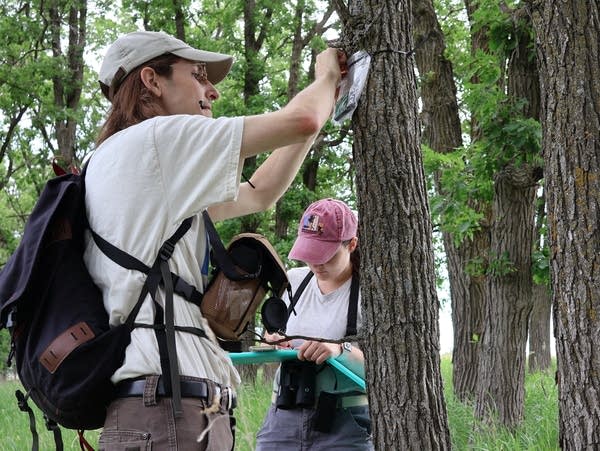Researchers use AI to help save a woodpecker species in decline

Technician Paul Zeitz attaches an audio recorder to a tree while Kate Sibila notes the location details. Researchers are gathering recordings from hundreds of spots across Minnesota to learn more about the red-headed woodpecker.
Dan Gunderson | MPR News
Go Deeper.
Create an account or log in to save stories.
Like this?
Thanks for liking this story! We have added it to a list of your favorite stories.


